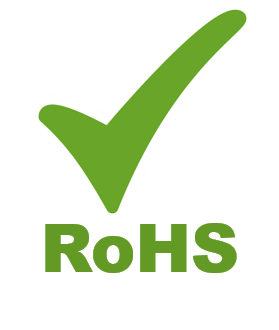EU RoHS
February 4, 2021 | Written by GreenSoft Technology, Inc.
Assessment Project Started for Commonly Used EU RoHS Exemptions
February 4, 2021|Written by GreenSoft Technology, Inc.
EU RoHS Annex III and IV Exemptions To Be Studied and Assessed
 The Öko-Institut e.V. Institute for Applied Ecology has launched two new projects on behalf of the European Commission to assess certain EU RoHS Exemptions.
The Öko-Institut e.V. Institute for Applied Ecology has launched two new projects on behalf of the European Commission to assess certain EU RoHS Exemptions.
The Pack 22 project, launched in December 2020, will evaluate sixteen industry requests for renewal of the following nine exemptions listed in Annex III of the EU RoHS Directive, per Article 5(1)(b) of EU RoHS Directive 2011/65/EU:
• Exemption 6(a)/6(a)-I for lead as an alloying element in steel for machining purposes and in galvanised steel containing up to 0,35 % lead by weight (2 requests, submitted on 17 and 20 January 2020);
• Exemption 6(b)/6(b)-I for lead as an alloying element in aluminium containing up to 0,4 % lead by weight, provided it stems from lead-bearing aluminium scrap recycling (2 request, submitted on 9 December 2019 and 17 January 2020);
• Exemption 6(b)-II for lead as an alloying element in aluminium for machining purposes with a lead content up to 0,4 % by weight (1 request, submitted on 8 November 2019);
• Exemption 6(c) for copper alloy containing up to 4 % lead by weight (2 requests, submitted on 3 and 15 January 2020);
• Exemption 7(a) for lead in high melting temperature type solders (i.e. lead-based alloys containing 85 % by weight or more lead) (2 requests, submitted on 6 and 25 January 2020);
• Exemption 7(c)-I for electrical and electronic components containing lead in a glass or ceramic other than dielectric ceramic in capacitors, e.g. piezoelectronic devices, or in a glass or ceramic matrix compound (6 requests, submitted on 2, 3, 6, 17, 19 and 20 January 2020);
• Exemption 7(c)-II for lead in dielectric ceramic in capacitors for a rated voltage of 125 V AC or 250 V DC or higher (1 request, submitted on 19 January 2020).
The Pack 24 project, launched in January 2021, will evaluate the following seven exemptions:
- Annex III, Exemption 18(b): Lead as activator in the fluorescent powder (1 % lead by weight or less) of discharge lamps when used as sun tanning lamps containing phosphors such as BSP.
- Annex III, Exemptions 18(b)-I: Lead as activator in the fluorescent powder (1 % lead by weight or less) of discharge lamps containing phosphors such as BSP when used in medical phototherapy equipment.
- Annex III, Exemption 24: Lead in solders for the soldering to machined through hole discoidal and planar array ceramic multilayer capacitors.
- Annex III, Exemption 29: Lead bound in crystal glass as defined in Annex I (Categories 1, 2, 3 and 4) of Council Directive 69/493/EEC.
- Annex III, Exemption 32: Lead oxide in seal frit used for making window assemblies for Argon and Krypton laser tubes.
- Annex III, Exemption 34: Lead in cermet-based trimmer potentiometer elements.
- Annex IV, Exemption 34: Lead as an activator in the fluorescent powder of discharge lamps when used for extracorporeal photopheresis lamps containing BSP (BaSi2O5:Pb) phosphors.”
The exemptions in both packs will be assessed to determine why the restricted substance is currently required or used, if a suitable substitute exists, and if the elimination or substitution of the restricted substances is technically or scientifically possible.
The Pack 22 and Pack 24 projects will also identify and assess the socio-economic impacts of substitution, the volume of Electrical and Electronic Equipment (EEE) concerned placed on the EU market annually, and the impact of employment in the EEE concerned industry and related to upstream and downstream supply chains in the EU.
Once the Öko-Institut e.V. Institute for Applied Ecology completes the Pack 22 and Pack 24 reviews, they will issue a report to the EU Commission which will contain recommendations on whether the exemptions should be renewed, and, if they are renewed, whether any changes to the exemption scope or applicability are advised. The EU Commission will consider these recommendations as they prepare official decisions on the renewals of these critical exemptions.
As noted in Article 5(6) of EU RoHS Directive 2011/65/EU, if the EU Commission declines to renew any of the exemptions under review, the exemption will remain valid for 12-18 months after the final decision is published in the EU Official Journal.
Stakeholders are invited to participate in a stakeholder consultation process for both projects, which interested parties can register for online. More information about both projects can be found here.
GreenSoft keeps track of EU RoHS exemptions for you
GreenSoft maintains a compiled list of the EU RoHS Exemptions in order to perform EU RoHS Data Services for our customers and to keep our GreenData Manager software up-to-date. We also make this list available online to the public for your convenience and reference.
Updates and exemptions to regulations occur regularly. With the status and timing of exemption extensions unknown, keeping track of the various dates and exemptions is a time-consuming task.
Affected companies using parts or materials that utilize expiring exemptions that were not extended should immediately begin finding replacements and phasing out the use of those parts or materials.
GreenSoft can help with this process, including the sourcing of replacement parts. We can help you collect the substance data on your parts and format the data to meet the due diligence and documentation requirements of EU RoHS and EN 50581.
Learn more about our EU RoHS Data Services or contact us today to get started.

